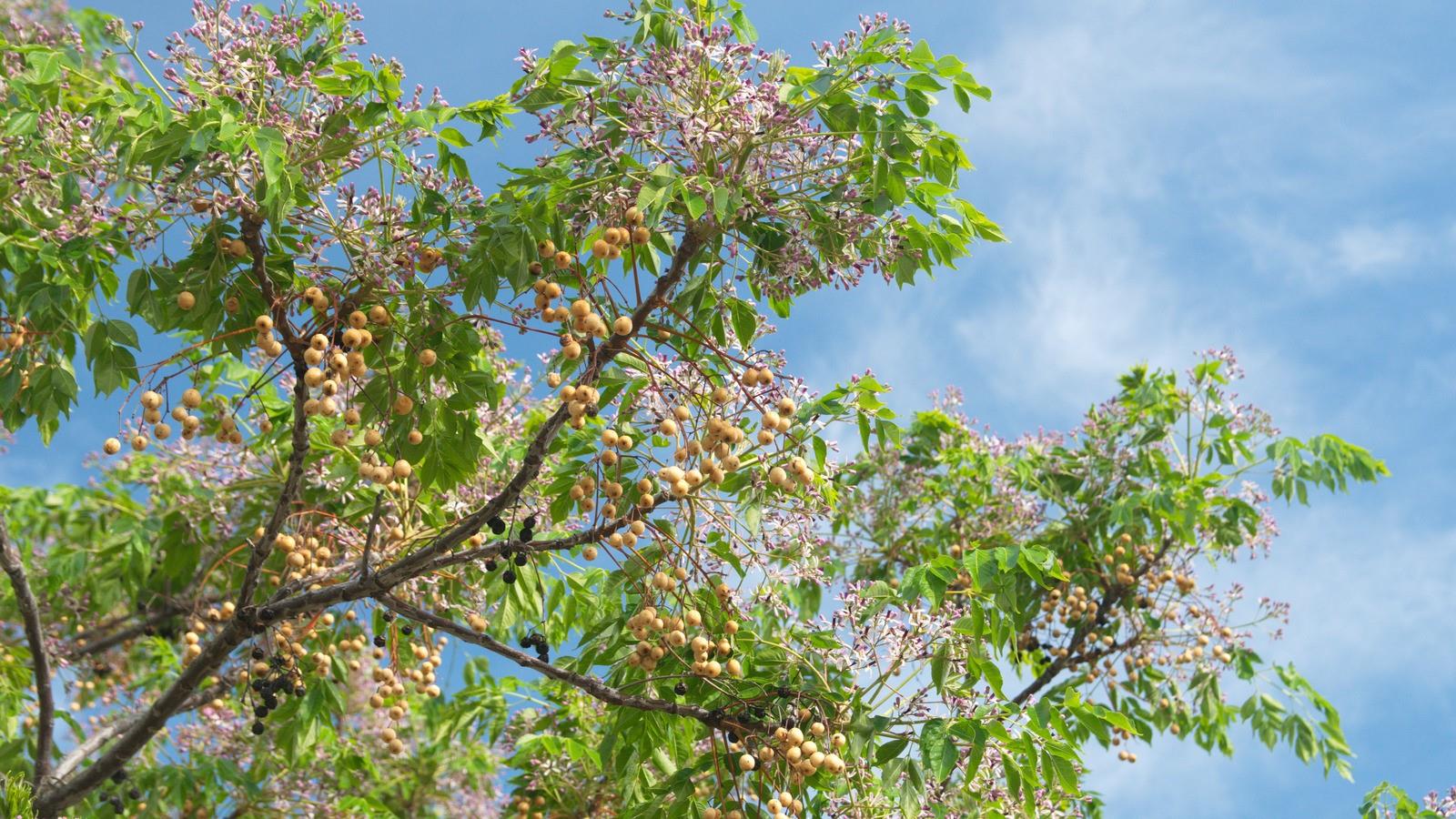
Ever wondered about the secrets lurking within the branches of the majestic Chinaberry tree? Well, you're in for a treat! These trees, with their lush foliage and fragrant blossoms, hold more than just beauty; they're a treasure trove of fascinating facts. From their historical roots to their modern-day uses, Chinaberry trees are nothing short of remarkable. Did you know that every part of the Chinaberry tree has a story to tell or a use to offer? Whether it's the medicinal properties of its leaves or the mystical symbolism it holds across different cultures, this tree is a living library of intriguing tidbits. So, let's peel back the layers and uncover the 20 best Chinaberry tree facts that will surely leave you in awe. Ready to be amazed? Let's dive in!
Key Takeaways:
- Chinaberry trees, also known as Melia azedarach, are fast-growing, drought-resistant trees with toxic berries. They offer shade, attract pollinators, and have historical and environmental significance.
- Despite their beauty, Chinaberry trees can be invasive and toxic. Careful consideration and education are needed to balance their benefits and potential risks in landscaping.
What is a Chinaberry Tree?
Chinaberry trees, known scientifically as Melia azedarach, are deciduous trees native to Asia and Australia. They are highly regarded for their ornamental beauty, featuring lush, green foliage and clusters of fragrant, purple-lilac flowers in the spring. Following the blooming period, the trees produce distinctive yellow berries.
- Melia azedarach is part of the mahogany family, Meliaceae.
- These trees can grow up to 50 feet tall, providing ample shade in gardens and streets.
Why Are Chinaberry Trees Popular?
Chinaberry trees are popular for several reasons, including their aesthetic appeal and the shade they offer. Their fast growth rate makes them a favorite among gardeners and landscapers looking to quickly enhance the beauty of their spaces.
- The fragrant flowers attract pollinators such as bees and butterflies, contributing to the biodiversity of the area.
- Chinaberry trees are drought-resistant, making them suitable for various climates.
The Unique Features of Chinaberry Trees
Chinaberry trees have several unique features that set them apart from other trees. Their leaves, flowers, and berries all have distinctive characteristics that are not only beautiful but also interesting from a botanical perspective.
- The leaves of the Chinaberry tree are feather-like, adding a delicate texture to the landscape.
- Its berries are toxic to humans and certain animals if ingested, serving as a natural deterrent for pests.
Historical Significance of Chinaberry Trees
Chinaberry trees hold historical significance in various cultures. They have been used in traditional medicine and have symbolic meanings in different societies.
- In traditional medicine, parts of the Chinaberry tree have been used to treat various ailments, including rheumatism and digestive issues.
- The tree is often associated with wisdom and longevity in certain cultures.
Environmental Impact of Chinaberry Trees
While Chinaberry trees are admired for their beauty and utility, they also have an environmental impact that is worth noting. In some regions, they are considered invasive, affecting local ecosystems.
- Chinaberry trees can outcompete native plants for resources, leading to a decrease in biodiversity.
- Their rapid growth and dense foliage can block sunlight from reaching understory plants, further inhibiting local flora.
How to Care for Chinaberry Trees
Caring for Chinaberry trees involves understanding their needs and ensuring they are met. Proper care can result in a healthy, thriving tree that adds beauty and shade for many years.
- Regular watering during dry periods will help young trees establish a strong root system.
- Pruning is necessary to maintain the desired shape and remove any dead or diseased branches.
The Role of Chinaberry Trees in Landscaping
In landscaping, Chinaberry trees serve multiple roles. They can be used as standalone specimens, in groups to create a natural screen, or as part of a mixed border.
- Their fast growth rate allows for quick establishment in new landscapes.
- The dense canopy provides excellent shade, making them ideal for use in parks and residential areas.
Challenges in Growing Chinaberry Trees
Despite their many benefits, growing Chinaberry trees comes with its own set of challenges. Awareness of these challenges can help gardeners and landscapers make informed decisions.
- In areas where they are considered invasive, planting Chinaberry trees may be discouraged or regulated.
- The toxicity of the berries requires caution, especially in gardens frequented by children and pets.
The Future of Chinaberry Trees
The future of Chinaberry trees in both natural and cultivated landscapes is a topic of ongoing discussion. As with many plants, their role is shaped by human needs, environmental concerns, and changing climates.
- Research into less invasive cultivars may allow for the continued use of Chinaberry trees in landscaping without the ecological downsides.
- Efforts to educate the public on the safe handling and disposal of Chinaberry tree parts can mitigate some of the risks associated with their toxicity.
Fun Facts About Chinaberry Trees
Chinaberry trees are not only known for their practical uses and environmental impact but also for some interesting trivia that adds to their allure.
- The wood of the Chinaberry tree is valued for its durability and is often used in furniture making.
- In some cultures, the leaves and flowers of the Chinaberry tree are used in ceremonies and decorations, highlighting its cultural significance beyond its physical beauty.
A Final Glimpse at Chinaberry Tree Wonders
We've journeyed through the fascinating world of Chinaberry trees, uncovering their beauty, risks, and uses. These trees, with their lush foliage and stunning purple blossoms, add a touch of magic to any landscape. Yet, their toxic traits remind us of nature's complexity, where beauty often comes with caution. From their role in traditional medicine to their impact on ecosystems, Chinaberry trees are a testament to the intricate balance of our natural world. Whether you're a gardener, a nature enthusiast, or simply someone who appreciates the wonders of the earth, the story of the Chinaberry tree offers valuable lessons and insights. Let's continue to explore, respect, and protect the diverse species that share our planet, for in them, we find the true essence of life's interconnectedness.
Frequently Asked Questions
Was this page helpful?
Our commitment to delivering trustworthy and engaging content is at the heart of what we do. Each fact on our site is contributed by real users like you, bringing a wealth of diverse insights and information. To ensure the highest standards of accuracy and reliability, our dedicated editors meticulously review each submission. This process guarantees that the facts we share are not only fascinating but also credible. Trust in our commitment to quality and authenticity as you explore and learn with us.


